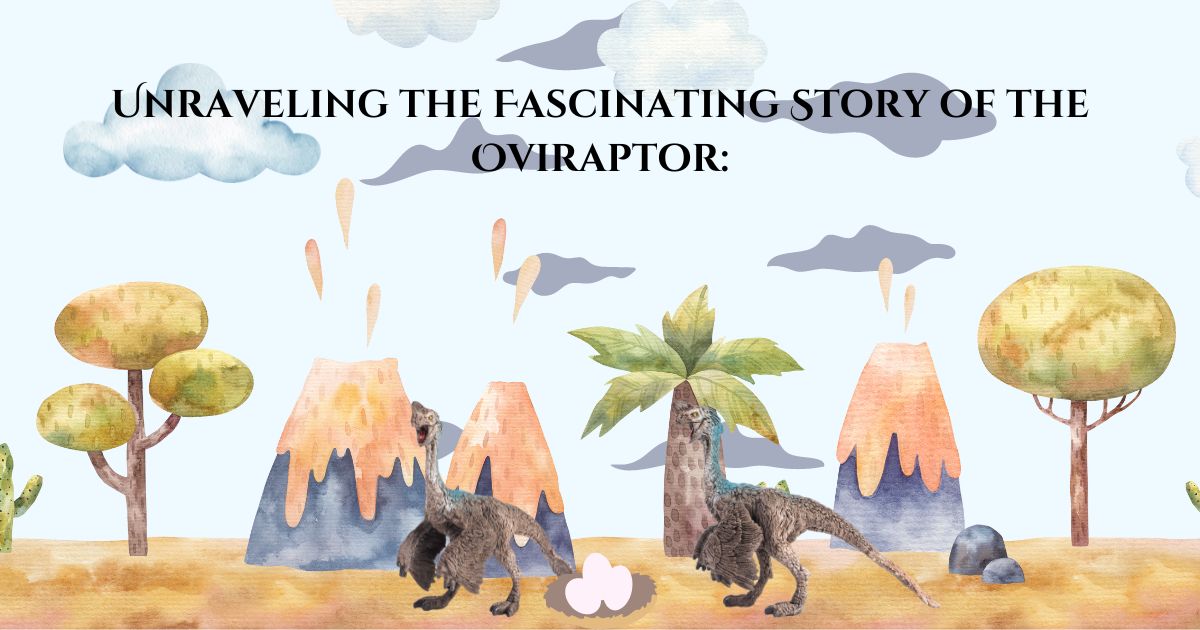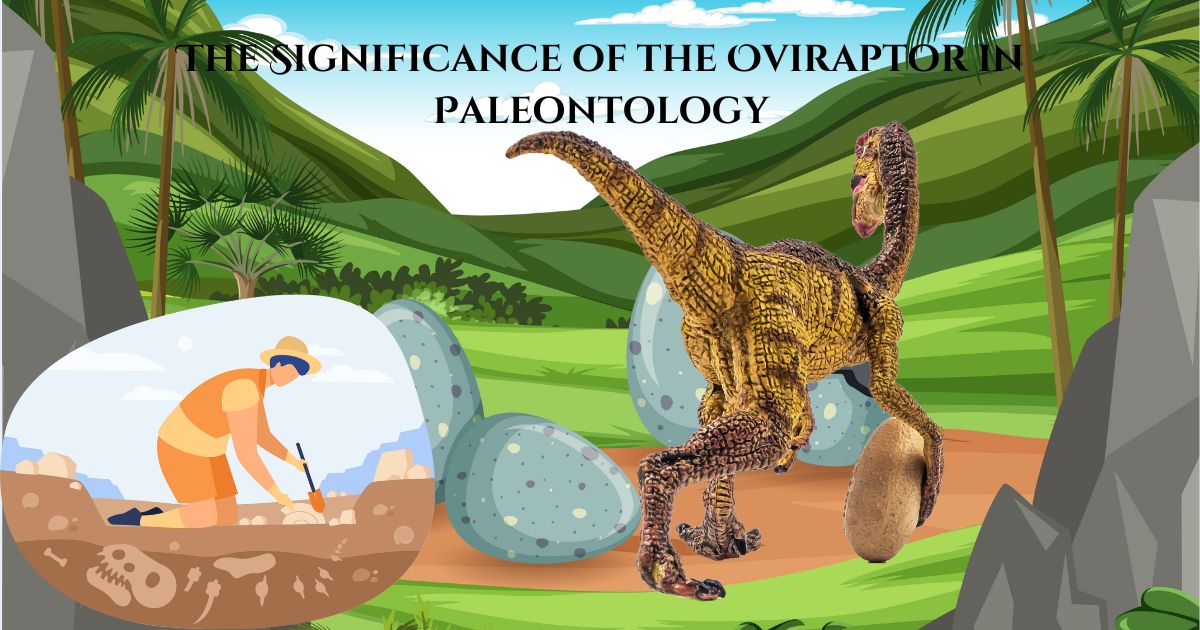Unraveling the Fascinating Story of the Oviraptor: A Prehistoric Mystery

Introduction
Unraveling the Fascinating Story of the Oviraptor: The ancient world is filled with secrets, and among them is the captivating story of the Oviraptor. This dinosaur has intrigued researchers and devotees alike since its revelation. “Unraveling the Captivating Story of the Oviraptor: A Ancient Secret” takes us profound into the life and times of this baffling animal. In this article, we will investigate the revelation, characteristics, environment, and the critical disclosures almost the Oviraptor that have risen over the years.
Key Takeaways
Discovery and Introductory Misguided judgments: The Oviraptor was to begin with found in the 1920s, and its title implies “egg cheat,” reflecting the starting conviction that it stole eggs from other dinosaurs.
Physical Characteristics: The Oviraptor was a little, feathered dinosaur with a parrot-like bill and a peak on its head.
Diet and Behavior: Opposite to early convictions, the Oviraptor likely bolstered on shellfish and other little creatures, or maybe than taking eggs.
Evolutionary Noteworthiness: The Oviraptor gives pivotal experiences into the advancement of feathered creatures and the differing qualities of theropod dinosaurs.
Ongoing Inquire about: Modern revelations and progressed innovations proceed to reshape our understanding of the Oviraptor and its put in the dinosaur family tree.
The Revelation of the Oviraptor
Early Excavations
The to begin with step in unraveling the intriguing story of the Oviraptor starts with its revelation in the 1920s. Paleontologists uncovered the to begin with Oviraptor fossil in the Gobi Forsake of Mongolia. This zone, wealthy in Cretaceous-period fossils, has given a treasure trove of dinosaur remains.
Misunderstandings and Starting Theories
Initially, the Oviraptor was misjudged. The title “Oviraptor,” meaning “egg cheat,” was given since the fossil was found close a settle of eggs, assumed to be those of another dinosaur. Early paleontologists accepted the Oviraptor was taking these eggs, in this way branding it as a cheat. Be that as it may, this discernment was afterward challenged, driving to a noteworthy move in our understanding.
Characteristics of the Oviraptor
Physical Appearance
“Unraveling the Captivating Story of the Oviraptor: A Ancient Puzzle” wouldn’t be total without portraying its physical characteristics. The Oviraptor was a little to medium-sized dinosaur, around 6.6 feet (2 meters) long and weighing around 55 pounds (25 kilograms). It had a unmistakable peak on its head, a beak-like mouth, and solid, feathered limbs.
Diet and Nourishing Habits
Contrary to the introductory conviction that it was an egg cheat, assist ponders uncovered that the Oviraptor’s slim down was more shifted. It was likely omnivorous, bolstering on plants, little creatures, and conceivably eggs. The structure of its jaw and teeth recommends it seem smash difficult objects, supporting the hypothesis that its eat less included shellfish and other hard-shelled creatures.
Habitat and Lifestyle
Environment
The environment of the Oviraptor was the semi-arid districts of what is presently Mongolia and northern China. These ranges, amid the Cretaceous period, were characterized by a blend of dry and damp seasons, supporting assorted vegetation and fauna.
Nesting and Reproduction
One of the most interesting perspectives of the Oviraptor’s story is its settling behavior. Disclosures of well-preserved homes have appeared that Oviraptors were caring guardians. They built homes and likely brooded their eggs, comparable to present day fowls. This behavior shows a complex social structure and parental care, which contrasts strongly with the prior picture of the Oviraptor as an egg thief.
Scientific Disclosures and Changing Perceptions
The Move from Cheat to Guardian
The essential minute in “Unraveling the Captivating Story of the Oviraptor: A Ancient Puzzle” came when more homes with Oviraptor fossils were found. These fossils were found in brooding positions over their possess eggs, debunking the egg cheat hypothesis. This disclosure painted the Oviraptor not as a scalawag, but as a sustaining creature.
Feathered Dinosaur
Further ponders have uncovered that the Oviraptor had plumes. This disclosure is critical since it gives a connect between dinosaurs and cutting edge feathered creatures. The nearness of quills recommends that the Oviraptor might have utilized them for show, temperature direction, or indeed in mating rituals.
The Significance of the Oviraptor in Paleontology

The Significance of the Oviraptor in Paleontology
Evolutionary Significance
The Oviraptor plays a pivotal part in understanding dinosaur advancement, especially the advancement of bird-like dinosaurs. Its bird-like highlights, such as plumes and settling behaviors, give experiences into the move from dinosaurs to birds.
Cultural Impact
The Oviraptor has moreover cleared out a check on prevalent culture. It has been highlighted in documentaries, books, and indeed motion pictures, captivating the creative ability of individuals around the world. This social affect makes a difference to raise mindfulness and intrigued in paleontology and ancient life.
Key Information About the Oviraptor
| Feature | Details |
|---|---|
| Name | Oviraptor |
| Meaning of Name | Egg Thief |
| Length | 2 meters (6.6 feet) |
| Weight | 20-30 kilograms (44-66 pounds) |
| Diet | Omnivorous (small animals, plants, eggs) |
| Discovery Location | Gobi Desert, Mongolia |
| Discoverer | Roy Chapman Andrews |
| Year Discovered | 1923 |
| Notable Traits | Crest on head, beak, feathered body |
FAQs About Unraveling the Fascinating Story of the Oviraptor:
What does the title Oviraptor mean?
The title Oviraptor implies “egg cheat.” It was named so since the to begin with fossil was found close a settle of eggs, which was at first thought to be another dinosaur’s eggs.
Was the Oviraptor truly an egg thief?
No, assist thinks about have appeared that the Oviraptor was not an egg cheat. Fossils found in brooding positions over their possess eggs demonstrate that they were caring parents.
What did the Oviraptor eat?
The Oviraptor was likely omnivorous, nourishing on plants, little creatures, and conceivably eggs. Its jaw and teeth structure recommend it might too eat hard-shelled creatures.
Did the Oviraptor have feathers?
Yes, prove appears that the Oviraptor had plumes. This disclosure joins it to present day fowls and gives experiences into the advancement of quills in dinosaurs.
Where did the Oviraptor live?
The Oviraptor lived in the semi-arid districts of what is presently Mongolia and northern China amid the Cretaceous period.
Conclusion
“Unraveling the Captivating Story of the Oviraptor: A Ancient Secret” takes us on a travel from misinterpretations to exceptional disclosures. The Oviraptor, once thought to be a basic egg cheat, has been uncovered as a complex and interesting animal. Its sustaining behavior, omnivorous eat less, and bird-like highlights have given profitable experiences into the world of dinosaurs and their advancement. This ancient puzzle proceeds to charm researchers and devotees alike, reminding us of the ever-evolving nature of our understanding of the past.